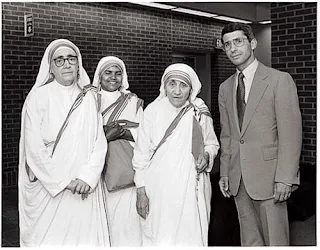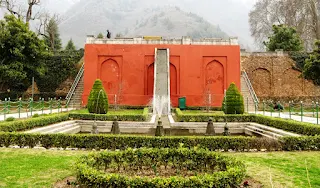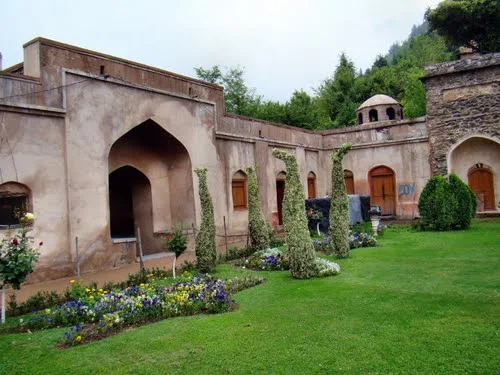“Mother Teresa, in all aspects of her life, was a generous dispenser of divine mercy, making herself available for everyone through her welcome and defense of human life, those unborn and those abandoned and discarded,”
“She bowed down before those who were spent, left to die on the side of the road, seeing in them their God-given dignity. She made her voice heard before the powers of this world, so that they might recognize their guilt for the crime of poverty they created.”
Mother Teresa was a living saint who offered a great example and inspiration to the world.
Mother Teresa MC (1910–1997), known in the Catholic Church as Saint Teresa of Calcutta, was an Albanian-Indian Roman Catholic nun and missionary.She was born in Skopje (now the capital of the Republic of Macedonia), then part of the Kosovo Vilayet of the Ottoman Empire. After living in Macedonia for eighteen years she moved to Ireland and then to India, where she lived for most of her life.
Little is known about her early life, but at a young age, she felt a calling to be a nun and serve through helping the poor. At the age of 18, she was given permission to join a group of nuns in Ireland. After a few months of training, with the Sisters of Loreto, she was then given permission to travel to India. She took her formal religious vows in 1931 and chose to be named after St Therese of Lisieux – the patron saint of missionaries.
Mother Teresa was a Roman Catholic nun who devoted her life to serving the poor and destitute around the world. On her arrival in India, she began by working as a teacher; however, the widespread poverty of Calcutta made a deep impression on her, and this led to her starting a new order called “The Missionaries of Charity”. The primary objective of this mission was to look after people, who nobody else was prepared to look after. Mother Teresa felt that serving others was a fundamental principle of the teachings of Jesus Christ.

She spent many years in Calcutta, On 10 September 1946, Teresa experienced what she later described as "the call within the call" when she traveled by train to the Loreto convent in Darjeeling from Calcutta for her annual retreat. "I was to leave the convent and help the poor while living among them. It was an order. To fail would have been to break the faith." Joseph Langford later wrote, "Though no one knew it at the time, Sister Teresa had just become Mother Teresa".
She began missionary work with the poor in 1948, replacing her traditional Loreto habit with a simple, white cotton sari with a blue border. Teresa adopted Indian citizenship, spent several months in Patna to receive basic medical training at Holy Family Hospital and ventured into the slums. She founded a school in Motijhil, Kolkata, before she began tending to the poor and hungry. At the beginning of 1949 Teresa was joined in her effort by a group of young women, and she laid the foundation for a new religious community helping the "poorest among the poor".
Her efforts quickly caught the attention of Indian officials, including the prime minister. Teresa wrote in her diary that her first year was fraught with difficulty. With no income, she begged for food and supplie s and experienced doubt, loneliness and the temptation to return to the comfort of convent life during these early months:
In her word' :-
Our Lord wants me to be a free nun covered with the poverty of the cross. Today, I learned a good lesson. The poverty of the poor must be so hard for them. While looking for a home I walked and walked till my arms and legs ached. I thought how much they must ache in body and soul, looking for a home, food and health. Then, the comfort of Loreto [her former congregation] came to tempt me. "You have only to say the word and all that will be yours again", the Tempter kept on saying ... Of free choice, my God, and out of love for you, I desire to remain and do whatever be your Holy will in my regard. I did not let a single tear come.
On 7 October 1950, Teresa received Vatican permission for the diocesan congregation which would become the Missionaries of Charity, a religious congregation devoted to helping those in great need. The congregation manages homes for people dying of HIV/AIDS, leprosy and tuberculosis; soup kitchens; dispensaries and mobile clinics; children's- and family-counselling programmes; orphanages, and schools. Members, who take vows of chastity, poverty, and obedience, also profess a fourth vow: to give "wholehearted free service to the poorest of the poor".
In her words:-
it would care for "the hungry, the naked, the homeless, the crippled, the blind, the lepers, all those people who feel unwanted, unloved, uncared for throughout society, people that have become a burden to the society and are shunned by everyone".
In 1952, Teresa opened her first hospice with help from Calcutta
officials. She converted an abandoned Hindu temple into the Kalighat
Home for the Dying, free for the poor, and renamed it Kalighat, the Home
of the Pure Heart (Nirmal Hriday). Those brought to the home received
medical attention and the opportunity to die with dignity in accordance
with their faith: Muslims were read the Quran, Hindus received water
from the Ganges, and Catholics received extreme unction.
She opened a hospice for those with leprosy, calling it Shanti Nagar
(City of Peace). The Missionaries of Charity established
leprosy-outreach clinics throughout Calcutta, providing medication,
dressings and food.The Missionaries of Charity took in an increasing
number of homeless children; in 1955 Teresa opened Nirmala Shishu
Bhavan, the Children's Home of the Immaculate Heart, as a haven for
orphans and homeless youth.
The congregation began to
attract recruits and donations, and by the 1960s it had opened hospices,
orphanages and leper houses throughout India. Teresa then expanded the
congregation abroad, opening a house in Venezuela in 1965 with five
sisters. Houses followed in Italy (Rome), Tanzania and Austria in 1968,
and during the 1970s the congregation opened houses and foundations in
the United States and dozens of countries in Asia, Africa and Europe.
The
Missionaries of Charity Brothers was founded in 1963, and a
contemplative branch of the Sisters followed in 1976. Lay Catholics and
non-Catholics were enrolled in the Co-Workers of Mother Teresa, the Sick
and Suffering Co-Workers, and the Lay Missionaries of Charity.
Responding to requests by many priests, in 1981 Mother Teresa founded
the Corpus Christi Movement for Priests and (with priest Joseph
Langford) the Missionaries of Charity Fathers in 1984 to combine the
vocational aims of the Missionaries of Charity with the resources of the
priesthood.
Mother Teresa said:-
"By blood, I am Albanian. By citizenship, an Indian. By faith, I am a Catholic nun. As to my calling, I belong to the world. As to my heart, I belong entirely to the Heart of Jesus."
Fluent in five languages – Bengali, Albanian, Serbian, English and Hindi – she made occasional trips outside India for humanitarian reasons. In 1982, at the height of the Siege of Beirut, Teresa rescued 37 children trapped in a front-line hospital by brokering a temporary cease-fire between the Israeli army and Palestinian guerrillas. Accompanied by Red Cross workers, she traveled through the war zone to the hospital to evacuate the young patients.
When Eastern Europe experienced increased openness in the late 1980s, Teresa expanded her efforts to Communist countries which had rejected the Missionaries of Charity. She began dozens of projects, undeterred by criticism of her stands against abortion and divorce: "No matter who says what, you should accept it with a smile and do your own work." She visited Armenia after the 1988 earthquake and met with Nikolai Ryzhkov, Chairman of the Council of Ministers.
Teresa travelled to assist the hungry in Ethiopia, radiation victims at Chernobyl and earthquake victims in Armenia. In 1991 she returned to Albania for the first time, opening a Missionaries of Charity Brothers home in Tirana.
By 1996, Teresa operated 517 missions in over 100 countries. Her Missionaries of Charity grew from twelve to thousands, serving the "poorest of the poor" in 450 centres worldwide. The first Missionaries of Charity home in the United States was established in the South Bronx area of New York City, and by 1984 the congregation operated 19 establishments throughout the country.
When Eastern Europe experienced increased openness in the late 1980s, Teresa expanded her efforts to Communist countries which had rejected the Missionaries of Charity. She began dozens of projects, undeterred by criticism of her stands against abortion and divorce: "No matter who says what, you should accept it with a smile and do your own work." She visited Armenia after the 1988 earthquake and met with Nikolai Ryzhkov, Chairman of the Council of Ministers.
Teresa travelled to assist the hungry in Ethiopia, radiation victims at Chernobyl and earthquake victims in Armenia. In 1991 she returned to Albania for the first time, opening a Missionaries of Charity Brothers home in Tirana.
By 1996, Teresa operated 517 missions in over 100 countries. Her Missionaries of Charity grew from twelve to thousands, serving the "poorest of the poor" in 450 centres worldwide. The first Missionaries of Charity home in the United States was established in the South Bronx area of New York City, and by 1984 the congregation operated 19 establishments throughout the country.
On 13 March 1997 Teresa resigned as head of the Missionaries of Charity, and she died on 5 September. At the time of her death, the Missionaries of Charity had over 4,000 sisters and an associated brotherhood of 300 members operating 610 missions in 123 countries. These included hospices and homes for people with HIV/AIDS, leprosy and tuberculosis, soup kitchens, children's- and family counselling programmes, orphanages and schools. The Missionaries of Charity were aided by co-workers numbering over one million by the 1990s.
Teresa lay in repose in St Thomas, Calcutta, for a week before her funeral. She received a state funeral from the Indian government in gratitude for her service to the poor of all religions in the country. Teresa's death was mourned in the secular and religious communities. Prime Minister of Pakistan Nawaz Sharif called her "a rare and unique individual who lived long for higher purposes. Her life-long devotion to the care of the poor, the sick, and the disadvantaged was one of the highest examples of service to our humanity." According to former U.N. Secretary-General Javier Pérez de Cuéllar, "She is the United Nations. She is peace in the world and in Kolkata, she is worshiped as a goddess by some Hindus.
Teresa lay in repose in St Thomas, Calcutta, for a week before her funeral. She received a state funeral from the Indian government in gratitude for her service to the poor of all religions in the country. Teresa's death was mourned in the secular and religious communities. Prime Minister of Pakistan Nawaz Sharif called her "a rare and unique individual who lived long for higher purposes. Her life-long devotion to the care of the poor, the sick, and the disadvantaged was one of the highest examples of service to our humanity." According to former U.N. Secretary-General Javier Pérez de Cuéllar, "She is the United Nations. She is peace in the world and in Kolkata, she is worshiped as a goddess by some Hindus.
A controversial figure during her life and after her death, Teresa was admired by many for her charitable work. She was praised and criticised for her opposition to abortion, and criticised for poor conditions in her houses for the dying. Her authorised biography was written by Navin Chawla and published in 1992, and she has been the subject of films and other books.
Some of the other Inspirational quotes by Mother Teresa :-
1. " It is not how much we do, but how much love we put in the doing. It is not how much we give, but how much love we put in the giving.”
2. “Love cannot remain by itself – it has no meaning. Love has to be put into action, and that action is service .”
3. “Not all of us can do great things. But we can do small things with great love.”
4. “The hunger for love is much more difficult to remove than the hunger for bread.”
2. “Love cannot remain by itself – it has no meaning. Love has to be put into action, and that action is service .”
3. “Not all of us can do great things. But we can do small things with great love.”
4. “The hunger for love is much more difficult to remove than the hunger for bread.”
Awards given to Mother Teresa :-
- Indian government awarded "The Padma Shri" in 1962.
- Ramon Magsaysay Peace Prize in 1962.
- Indian government awarded "Jawaharlal Nehru Award for International Understanding" in 1969.
- The first Pope John XXIII Peace Prize in 1971
- Kennedy Prize in 1971.
- Albert Schweitzer International Prize in 1975.
- Indian government awarded "The Nobel Peace Prize and became a symbol of charitable, selfless work" in 1979.
- Indian government awards "Bharat Ratna (India's highest civilian award) in 1980.
- States Presidential Medal of Freedom in 1985.
- Congressional Gold Medal in 1994.
- U Thant Peace Award in 1994.
- Honorary citizenship of the United States (November 16, 1996).To commemorate the 100th anniversary of her birth, the government of India issued a special 5rs coin (the amount of money Teresa had when she arrived in India) on 28 August 2010. President Pratibha Patil said, "Clad in a white sari with a blue border, she and the sisters of Missionaries of Charity became a symbol of hope to many – the aged, the destitute, the unemployed, the diseased, the terminally ill, and those abandoned by their families."
. In 2016, Mother Teresa was canonised by the Roman Catholic Church as Saint Teresa and the anniversary of her death (5 September) is her feast day.
Film and literature :-
Documentaries and books:
- Teresa is the subject of the 1969 documentary film and 1972 book, Something Beautiful for God, by Malcolm Muggeridge. The film has been credited with drawing the Western world's attention to Mother Teresa.
- Christopher Hitchens' 1994 documentary, Hell's Angel, argues that Teresa urged the poor to accept their fate; the rich are portrayed as favored by God. It was the precursor of Hitchens' essay, The Missionary Position: Mother Teresa in Theory and Practice.
Dramatic films and television:
- Geraldine Chaplin played Teresa in Mother Teresa: In the Name of God's Poor, which received a 1997 Art Film Festival award.
- She was played by Olivia Hussey in a 2003 Italian television miniseries, Mother Teresa of Calcutta. Re-released in 2007, it received a CAMIE award.
- Teresa was played by Juliet Stevenson in the 2014 film, The Letters, which was based on her letters to Vatican priest Celeste van Exem.
For more details = Mother Teresa












































































